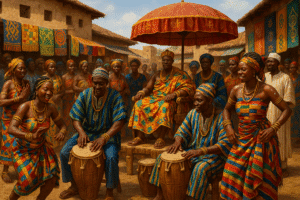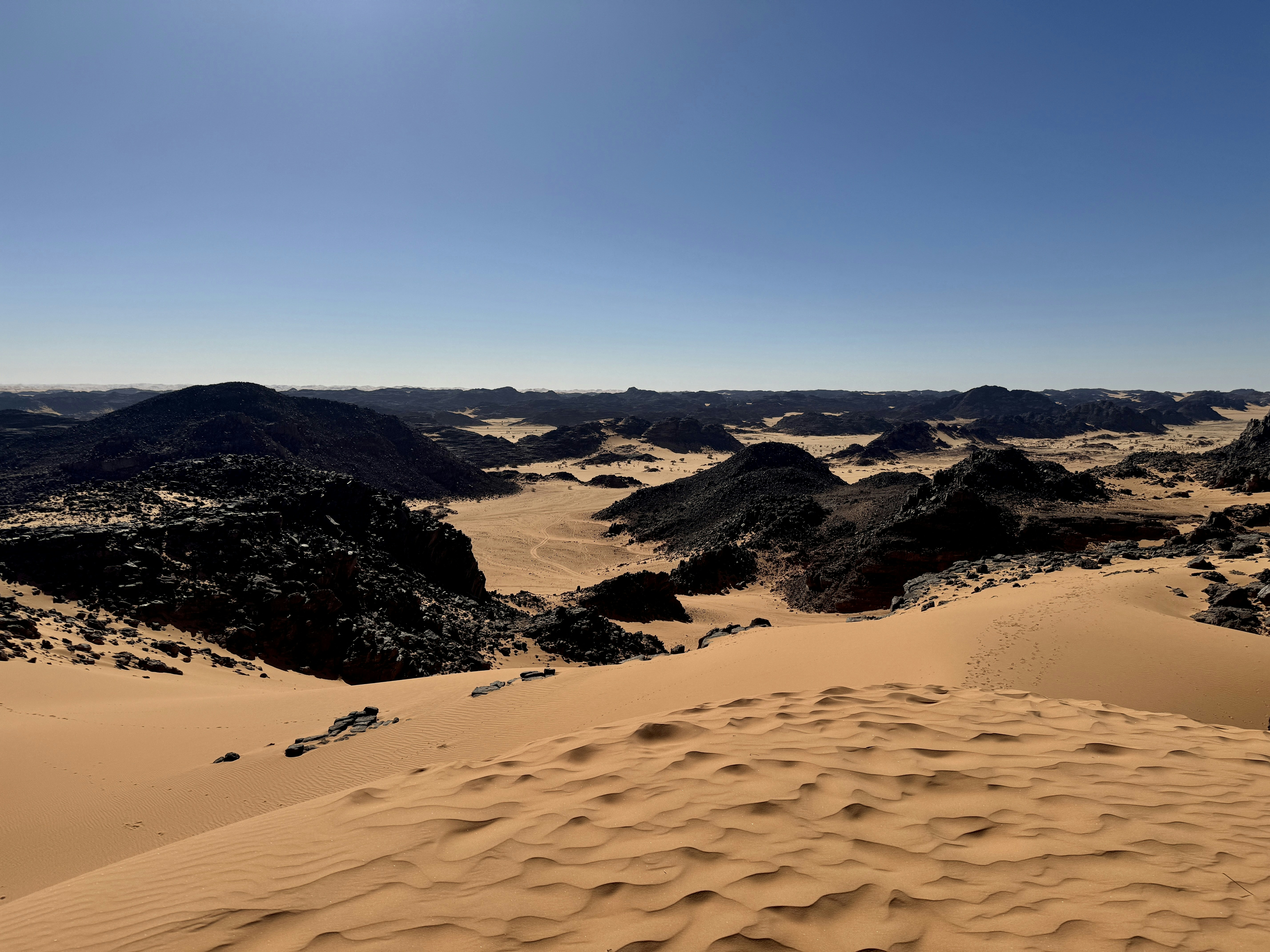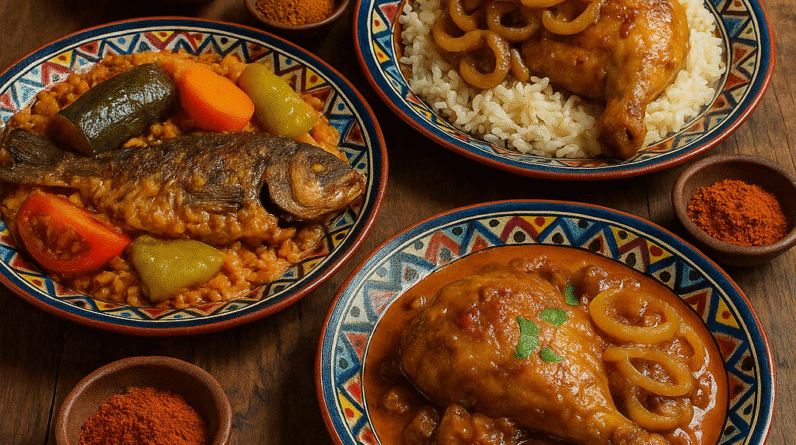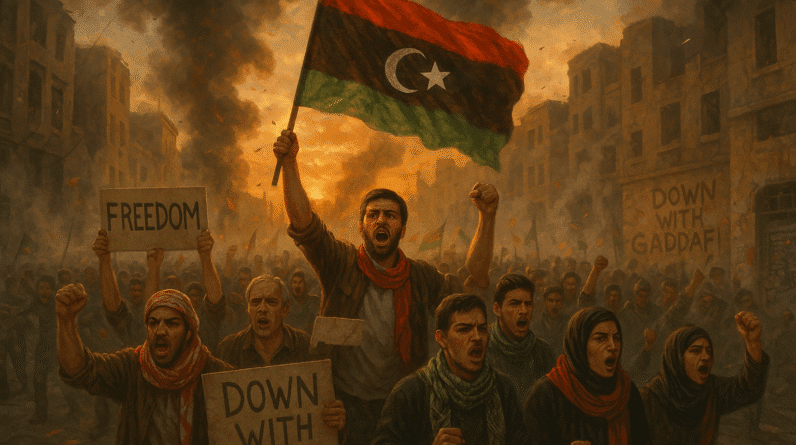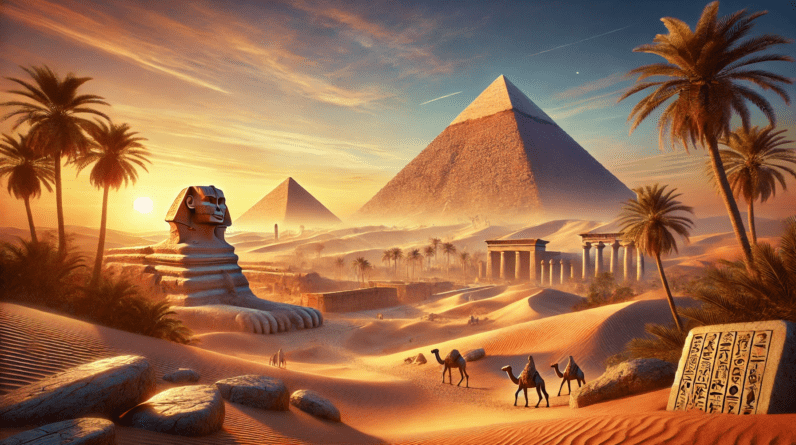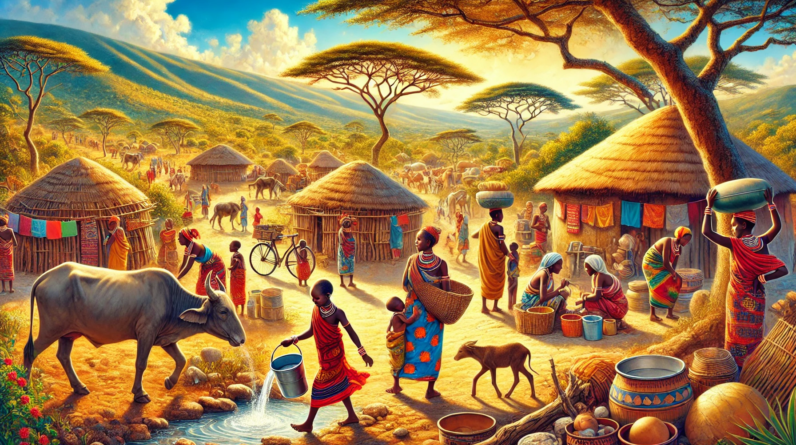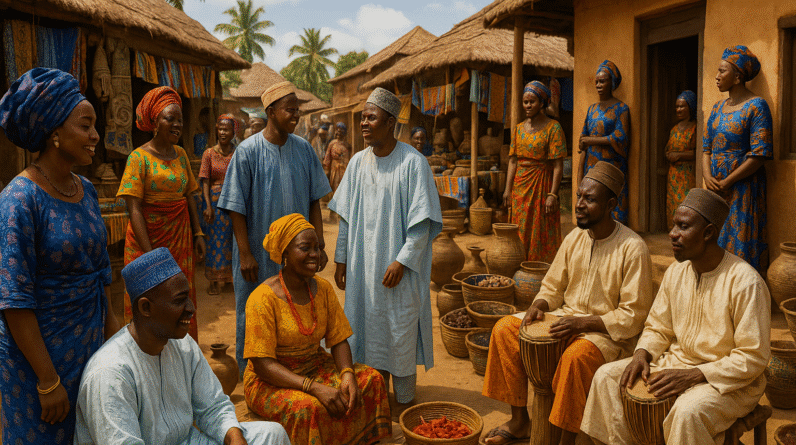
Cultural Diversity in North Africa
Cultural Diversity in North Africa. Have you ever wondered about the rich and varied cultural landscape of North Africa? From Egypt to Tunisia to Morocco, this region is overflowing with diverse traditions, languages, and customs waiting to be explored by you. Let’s delve into the fascinating world of Cultural Diversity in North Africa together.
Geographical Overview of North Africa
North Africa is comprised of a group of countries located in the Maghreb region and the Nile Valley. It includes countries such as Egypt, Morocco, Algeria, Tunisia, Libya, Sudan, and Mauritania. The region is bordered by the Mediterranean Sea to the north, the Atlantic Ocean to the west, the Red Sea to the east, and the Sahel region to the south.
The diverse geographical landscape of North Africa, which ranges from deserts to mountains and coastlines, has played a significant role in shaping the varied cultures and traditions of the region.
The Sahara Desert: A Cultural Divider and Unifier
The Sahara Desert, the world’s largest hot desert, stretches across North Africa from the Atlantic Ocean to the Red Sea. While this vast expanse of arid land has historically served as a barrier dividing different regions, it has also been a unifying force, shaping the cultures and lifestyles of the desert-dwelling nomadic tribes known as the Bedouins.
The Bedouins have developed unique customs, traditions, and survival techniques adapted to the harsh desert environment. Their way of life, including camel herding, traditional dress, and communal living in tents or encampments, has become synonymous with the cultural landscape of North Africa.
Ethnic and Linguistic Diversity in North Africa
North Africa is home to a rich tapestry of ethnic groups and linguistic communities, each with its distinct cultural heritage and traditions. The region’s population is predominantly composed of indigenous Berber tribes, Arabs, Nubians, Tuaregs, and sub-Saharan African groups, among others.
Berber Tribes: Guardians of Ancient Traditions
The Berber people, also known as Amazigh, are the indigenous inhabitants of North Africa. They have a long and complex history dating back thousands of years, with many Berbers still speaking their unique Berber languages in addition to Arabic and French.
Berber culture is characterized by vibrant music, intricate handicrafts, traditional dress, and a strong sense of community and hospitality. The preservation of Berber heritage and traditions plays a crucial role in maintaining the cultural diversity of North Africa.
Arab Influence and Cultural Exchange
Arab culture and language have left a lasting impact on North Africa, particularly through the spread of Islam in the region. Arabs introduced their language, customs, and architectural styles, influencing art, music, literature, and cuisine in countries like Egypt, Morocco, and Tunisia.
The fusion of Arab and indigenous Berber cultures has given rise to a unique blend of traditions and practices found in North African societies today. This cultural exchange has enriched the region’s diversity and contributed to its vibrant cultural landscape.
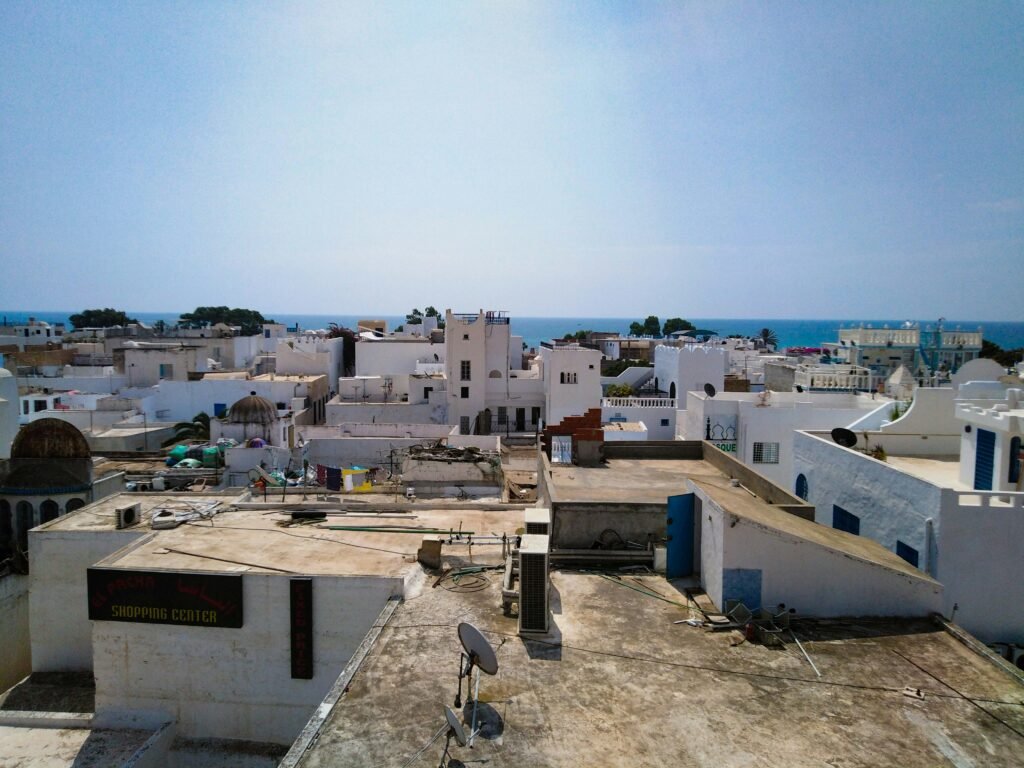
This image is property of images.unsplash.com.
Religious Diversity and Traditions in North Africa
Religion plays a significant role in shaping the cultural identity of North African societies, with Islam being the predominant religion in the region. However, Christianity, Judaism, and indigenous African religions also have a presence in certain communities, adding to the religious diversity of North Africa.
Islam: The Cornerstone of North African Culture
Islam, brought to North Africa by Arab conquerors in the 7th century, has become deeply ingrained in the cultural fabric of the region. Mosques, madrasas, and minarets are common sights in North African cities, serving as centers of worship, education, and community life.
Islamic festivals, such as Ramadan and Eid al-Fitr, are widely celebrated in North Africa, bringing communities together in prayer, feasting, and cultural exchange. The principles of Islam, including charity, compassion, and hospitality, are integral to the cultural values of North African societies.
Religious Tolerance and Coexistence
North Africa has a long history of religious tolerance and coexistence, with Muslims, Christians, and Jews living side by side in many communities. Countries like Morocco and Tunisia have preserved synagogues, churches, and mosques as symbols of shared faith and heritage.
Interfaith dialogue, cultural exchange, and mutual respect among different religious groups are essential aspects of North African societies, fostering harmony, understanding, and peace in the region. The tradition of religious tolerance in North Africa is a testament to the cultural diversity and richness of the region.
Arts, Music, and Cuisine: Expressions of North African Culture
The arts, music, and cuisine of North Africa are vibrant expressions of the region’s rich cultural heritage and diversity. From traditional crafts and musical performances to flavorful dishes and culinary traditions, these artistic forms reflect the unique identities and histories of North African societies.
North African artisans are renowned for their intricate craftsmanship and attention to detail in producing traditional arts and crafts. Items such as woven carpets, ceramic pottery, leather goods, and metalwork are popular exports that showcase the cultural richness and creativity of the region.
The use of vibrant colors, geometric patterns, and symbolic motifs in North African art reflects the diverse influences and heritage of the region. These traditional arts and crafts are not only decorative but also serve as a means of preserving cultural heritage and passing down ancestral knowledge to future generations.
Music and Dance: Rhythms of North Africa
Music and dance are integral components of North African culture, with a wide variety of musical genres and dance styles found throughout the region. Traditional instruments like the oud, darbuka, and qanun are commonly used in creating lively and rhythmic melodies that accompany ceremonial events, celebrations, and social gatherings.
The diverse musical traditions of North Africa, from Andalusian melodies in Morocco to Rai music in Algeria, reflect the historical connections and exchanges between different cultures in the region. Dance forms like belly dancing, folkloric dances, and Sufi whirling are also popular expressions of artistic creativity and cultural identity in North Africa.
Culinary Delights: Taste of North Africa
North African cuisine is a culinary mosaic of flavors, spices, and ingredients that reflect the region’s diverse cultural influences and histories. Staple ingredients like couscous, dates, olives, almonds, and spices such as cumin, coriander, and cinnamon are commonly used in preparing traditional dishes.
Popular North African dishes like tagine, couscous, harira soup, and baklava are enjoyed across the region, each with its unique blend of flavors and textures that tantalize the taste buds. The art of cooking and sharing meals is an essential part of North African hospitality, bringing families and communities together in joyful feasting and cultural exchange.
This image is property of images.unsplash.com.
Challenges and Opportunities for Cultural Diversity in North Africa
While North Africa boasts a rich tapestry of cultural diversity and heritage, the region also faces challenges in preserving and promoting its unique traditions and identities. Economic development, urbanization, globalization, and political instability are some of the factors that impact the cultural landscape of North Africa.
Preservation of Cultural Heritage
Efforts to preserve and safeguard North Africa’s cultural heritage, including historical sites, traditions, languages, and artistic expressions, are essential for maintaining the region’s cultural diversity. Organizations, museums, and educational institutions play a crucial role in promoting awareness, appreciation, and conservation of North African heritage.
Cultural Revival and Innovation
Innovative initiatives and projects that promote cultural revival, creativity, and innovation are vital for sustaining North Africa’s diverse cultural landscape. Collaborations between artists, artisans, musicians, chefs, and designers can help revitalize traditional art forms, crafts, and practices, ensuring they remain relevant and accessible to future generations.
Intercultural Dialogue and Exchange
Interactions between different cultures, communities, and generations are key to fostering intercultural dialogue, mutual understanding, and respect in North Africa. Cultural exchange programs, festivals, and educational initiatives can facilitate meaningful connections and collaborations that celebrate the region’s cultural diversity and promote social cohesion.
Frequently Asked Questions – FAQs about cultural diversity in North Africa, along with insightful answers:
1. What does “North Africa” include and why is it culturally diverse?
North Africa typically refers to Morocco, Algeria, Tunisia, Libya, and sometimes Egypt (reddit.com). Its diversity stems from centuries of interwoven histories—Indigenous Amazigh (Berber), Arab conquest, Roman/Punic influence, Islamic civilization, Ottoman rule, European colonial impacts, and African migration (socialstudieshelp.com).
2. Who are the region’s main ethnic groups?
- Arabs: Form the majority (up to ~90% in Tunisia and Libya) (en.wikipedia.org)
- Amazigh/Imazighen (Berbers): Indigenous peoples, especially in Morocco and Algeria, constituting up to 30–35 % of populations, and speaking Tamazight languages (afropop.org)
- Tuareg: A nomadic Berber subgroup in the Sahara with their own Tifinagh script and cultural traditions (en.wikipedia.org)
- Minority faith communities: Coptic Christians in Egypt, small Jewish groups in Morocco/Tunisia, and migrant-based Christian house churches (en.wikipedia.org).
3. What languages are spoken in North Africa?
- Arabic dialects: Maghrebi Arabic and Egyptian Arabic dominate communication (en.wikipedia.org)
- Tamazight languages: Numerous modes of Berber across Morocco, Algeria, and the Sahara, with revitalization movements ongoing (afropop.org)
- Colonial languages: French is widely used in daily life and administration in former French colonies.
4. How does religion shape cultural diversity?
Islam (predominantly Sunni) is the major faith.
However, there are vibrant religious minorities:
- Coptic Christians in Egypt
- Jews in Morocco and Tunisia (<15,000 remain) (en.wikipedia.org)
- Sub‑Saharan migrant Christians forming house churches in Morocco (lemonde.fr).
5. What distinctive art, music, and craftsmanship exist?
- Gnawa music: A spiritual Moroccan genre—rooted in West African spiritualism and recognized by UNESCO (newyorker.com)
- Andalusian-influenced music: Zaïr, Nuubaat, Ma’luf—blending Arabic, Andalusian, and Berber elements across the region (en.wikipedia.org)
- Raï & Chaabi: Popular in Algeria; Gnawa rhythms and Saharan traditions are strong in Morocco and Libya (en.wikipedia.org)
- Crafts & architecture: Medina marketplaces, ornate tilework, and UNESCO sites like Fez, Marrakesh, and Kairouan (socialstudieshelp.com).
6. What are key cultural festivals?
- Carthage International Festival (music, theatre) in Tunisia (en.wikipedia.org)
- Gnawa Festival in Essaouira, Morocco – draws global audiences
- Tuareg ceremonies, including trance dances and nomadic gatherings (en.wikipedia.org).
7. How is cultural diversity evolving today?
- Language revival: Tamazight is gaining official status in Morocco and Algeria.
- Migration impact: Sub-Saharan migrants bring new religious layers and cultural practices—like the rise of house churches (en.wikipedia.org, lemonde.fr).
- Artistic resilience: Music and visual arts are mediums of cultural solidarity, especially around Sahel and Saharan communities (theguardian.com).
8. What social challenges are linked to culture?
- Tensions around ethnic identity and self-definition between Arab and Amazigh communities .
- Minority rights and acceptance, especially for darker-skinned populations—highlighted in online discussions around colorism .
Conclusion
North Africa’s rich and varied cultural diversity is a testament to the region’s complex history, diverse populations, and vibrant traditions. From the Sahara Desert to the coastal cities, from ancient ruins to modern metropolises, North Africa offers a kaleidoscope of cultural experiences waiting to be discovered and appreciated by you.
By exploring the geographical, ethnic, linguistic, religious, artistic, and culinary dimensions of North African culture, you will gain a deeper understanding and appreciation of the region’s unique heritage and identity. Embrace the rich tapestry of traditions, customs, and celebrations that make North Africa a fascinating mosaic of cultural diversity and unity. Journey through the landscapes of North Africa, and let the diversity of its cultures and people enchant and inspire you along the way.
